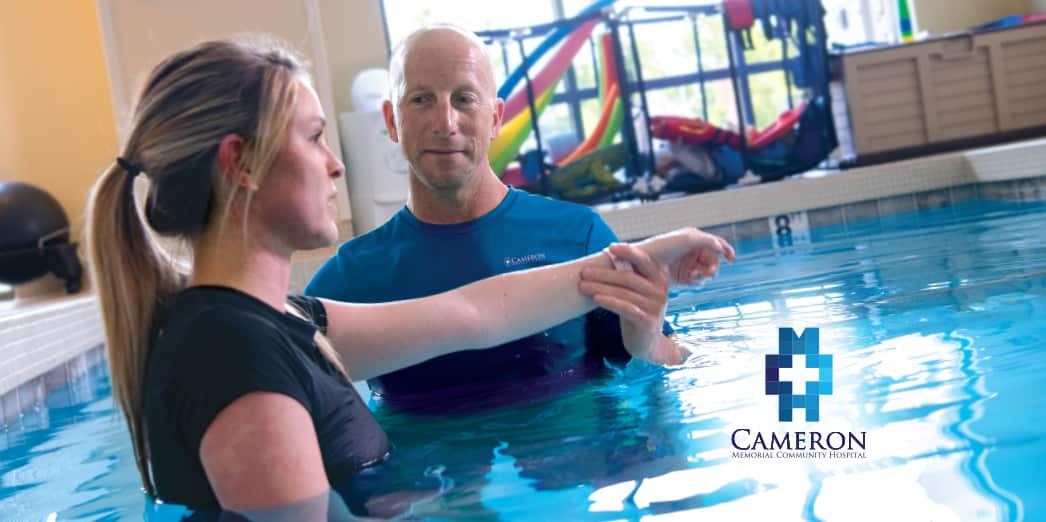
Avoiding Trips and Falls
September 13 – 20, 2020 is National Rehabilitation Awareness Week. Designed to acknowledge the many benefits that can arise from rehab programs, the week also highlights the positive impact rehab services can make in the lives of children, adults and older adults.
In honor of National Rehabilitation Awareness Week, Joell Stuckey, the Director of Rehabilitation Services at Cameron Hospital, provided useful information about trips and falls, some of the most common reasons behind rehabilitation services. An experienced occupational therapist, Joell has been with Cameron Hospital for 15 years.
1. The Dangers of Trips and Falls
Falls are a serious medical issue, especially for older people. As Joell points out, for those 65 and older, one in five falls result in serious injury. According to American Bone Health, age plays a major role in falls and their outcomes:
- More than 30% of Americans in this age range fall each year
- Falls are the most common cause of non-fatal injuries
- Falls are the leading cause of death in older Americans
- The rate of fall-related deaths among older adults has increased over the past decade
- Only half of elderly people can live alone after a fall with injury
- Each year, 3 million older individuals are treated at hospitals for injuries caused by falling
2. Be Aware of Common Reasons for Trips and Falls
Joell says of the best ways to avoid falling, especially for seniors, is to be aware of the risks and do what you can to avoid them. “Aside from pure accidents such as slipping on ice or tripping over an object, there are risk factors that make falls more likely. The first step to avoiding a fall is to be aware of some underlying causes,” she says. “Having a previous fall makes one more likely to fall again,” she explained. “Fear of a fall often causes a person to be less active, in turn, reducing muscle strength and mobility, which often makes additional falls more likely. It’s a vicious cycle.”
She also noted a few other risk factors:
- Medications that cause sleepiness or dizziness
- Memory loss and/or confusion
- Dizziness from inner ear problems or an underlying condition
- Bad vision or poor lighting
- Problems with feet or ankles
- Arthritis or other joint conditions
- A decline in health causing strength or endurance issues
3. Make Changes at Home
Joell says many of the patients she works with fall at home. Luckily, there are many things you can do to help create a safer environment to help prevent trips and falls in your home. A few of her recommendations include using nightlights, making sure rugs are secure and keeping walkways clear. The National Institute on Aging has an extensive lists of other ways to help avoid falls at home.
Joell also recommends wearing proper footwear, “Some of the popular shoes may be easy to slide on, but they don’t necessarily stay on. So, having properly fitting shoes with good traction is important. In the winter, I really recommend wearing traction cleats on your shoes, they are extremely effective in preventing slips on ice and snow.” She also says that avoiding overly loose clothing such as pants that drag on the ground can help avoid trips.
4. Take Care of Yourself
“Staying active and physically fit is extremely important,” says Joell. “The less healthy you are, the less mobile you become, which increases the likelihood of trips and falls.” She went on to explain that if someone is presented with a physical challenge, being an inactive person makes it harder for them to recover and stay upright.
The good news, according to Joell, is that it’s always possible to increase your flexibility and fitness level – at any age. She says just moving a little more every day helps keep fitness levels moving in the right direction. Of course, she recommends checking in with your healthcare provider before starting a new program. However, the best method is to stay fit throughout your life in order to stay as active and mobile for as long as possible.
The Centers for Disease Control recommends walking and activities that strengthen muscles and improve balance for older adults. They also have activity level recommendations for every age to help you improve your overall health. Joell says swimming is a great way for seniors to stay active. “Cameron stands out from other rehabilitation centers because we have our therapy pool that is always kept at a warm temperature. I do a great deal of work with patients recovering from falls there.”
5. Talk to Your Healthcare Provider
Having a regular physician is an important step in protecting your overall health. Joell says as far as preventing falls are concerned, you should see your provider to check for osteoporosis or other underlying medical conditions. “Osteoporosis causes bones to be more brittle, increasing the likelihood of fractures following a fall. However, it may be caused by something as simple as Vitamin D deficiency. Exercise can also help avoid or lessen osteoporosis.” Talking to your provider about the medication you take is also an important step in helping to prevent falls she says.
Cameron Rehabilitation Services offers an advanced and complete physical rehabilitation facility, including aquatic therapy in a warm therapy pool. With 16 experienced therapists on staff, Cameron has the resources to provide individual, one-on-one care. For more information about Cameron’s Rehabilitation Services, visit our website today.
Reviewed by: Joell Stuckey, Director of Rehabilitation Services at Cameron Hospital
Joell Stuckey has been an occupational therapist for 32 years. A graduate of Indiana University, she has been with Cameron for more than 15 years.
©2023 Cameron Memorial Community Hospital
416 E. Maumee Street, Angola, IN 46703
